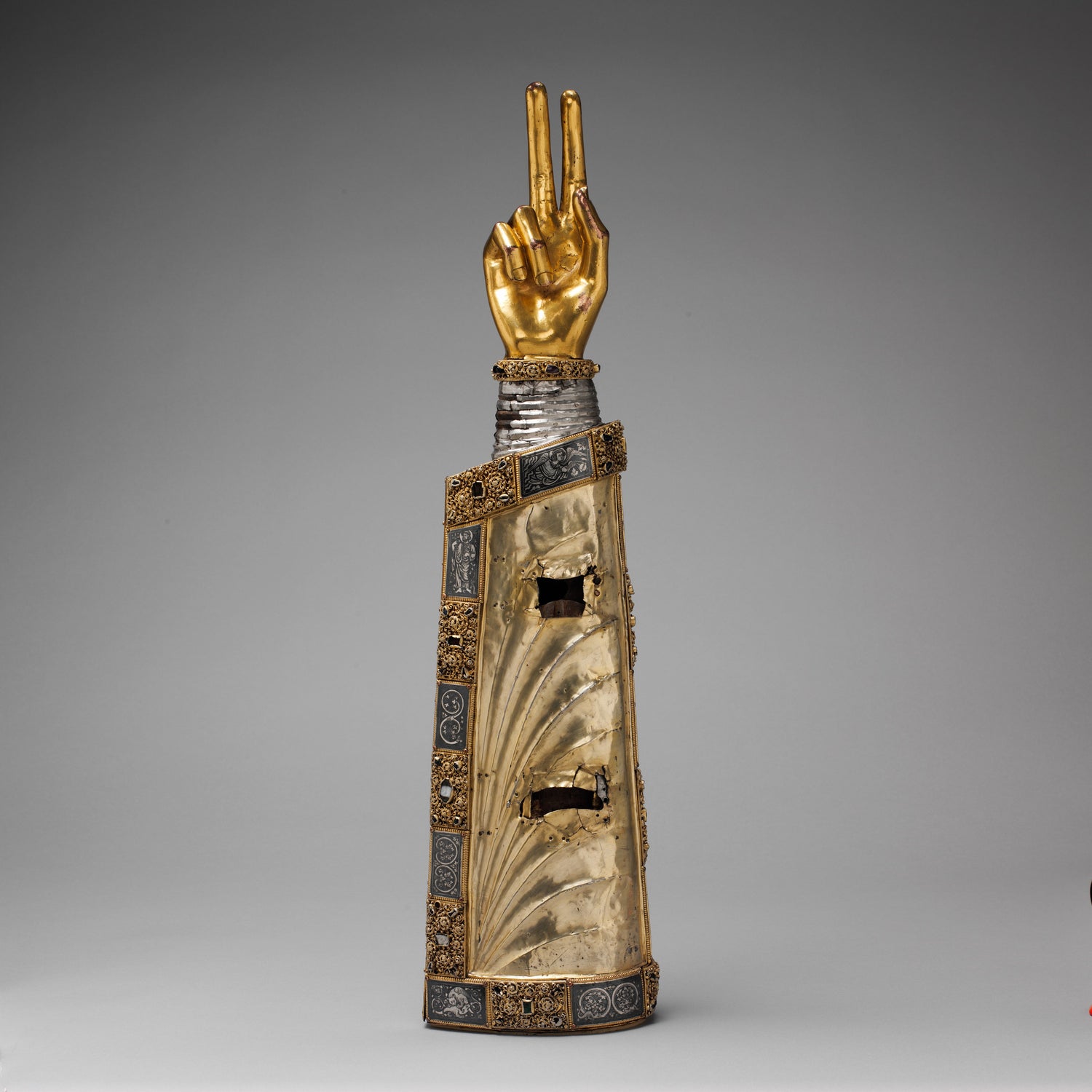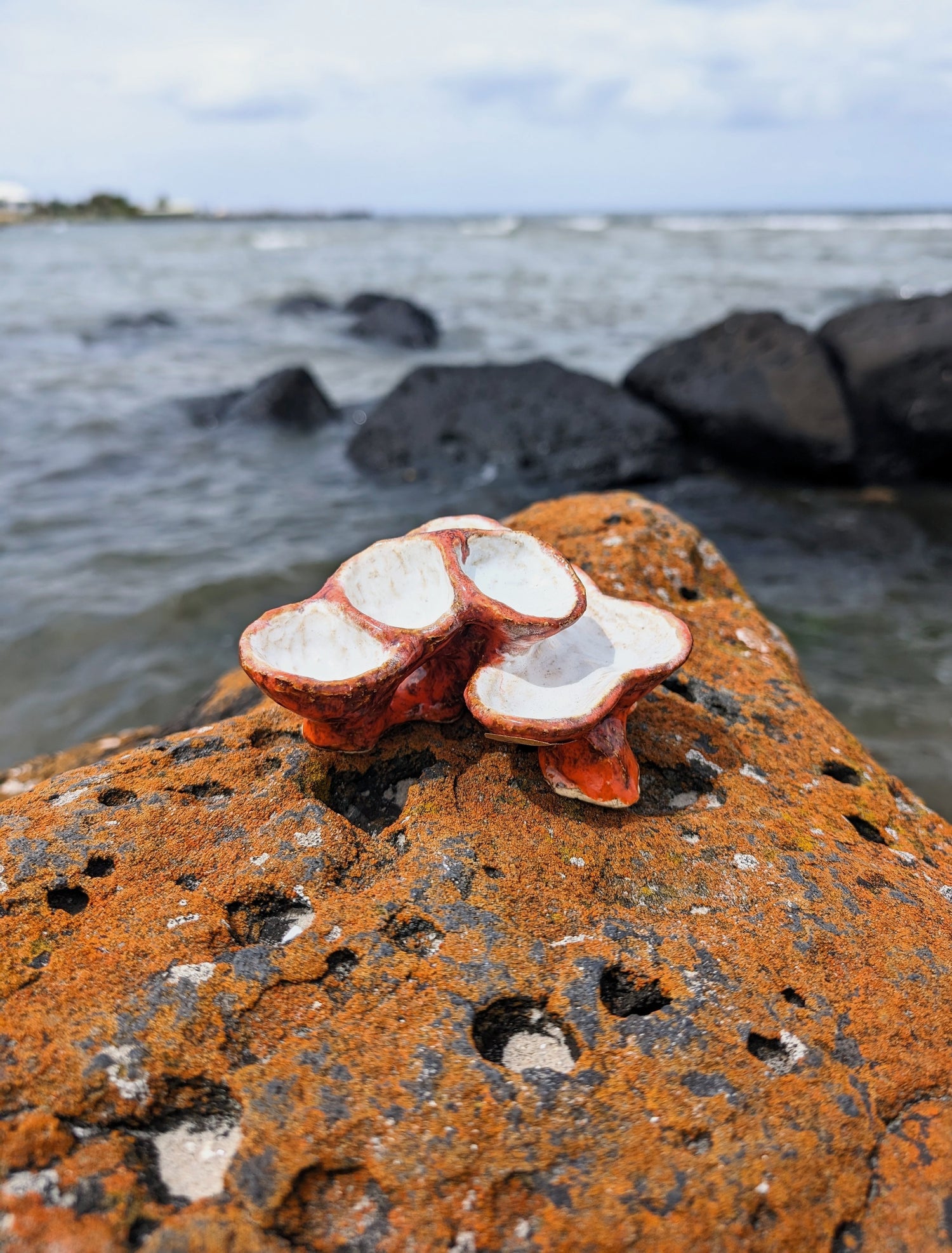On Reliquaries and Heirlooms

Historical Significance
A reliquary, as a container for relics, goes beyond just being a functional object—it’s a symbol of reverence and devotion. Relics, which often include physical remains like bones, hair, or clothing of saints, as well as items associated with them, were believed to carry divine power or blessings. Thus, reliquaries were crafted with the utmost care and artistry, often using materials such as gold, silver, ivory, and precious gemstones, to reflect the sacredness of what they contained.
These intricate containers varied greatly in form and design depending on the time period, region, and specific religious tradition. Some reliquaries took the shape of the saint's body, while others were designed as miniature chapels or shrines, often adorned with detailed carvings, enamel work, or filigree. Some even incorporated relics in the form of physical remains of the saint, while others might house items like pieces of clothing, vials of blood, or a fragment of a bone.
Image: Arm Reliquary

Reliquaries Reimagined
I have reimagined the reliquary in ceramic, taking a more personal and philosophical approach to its meaning. In my art, a reliquary physically and philosophically elevates whatever is lovingly placed within it, communicating to both yourself and others that these objects matter. Through texture, form, and material, I emphasize their inherent value—transforming everyday or personal objects into sacred symbols. The ceramic medium, with its permanence and earthiness, connects the spiritual to the tangible, making the container itself a vessel of both memory and reverence. This reimagining invites reflection on what we hold dear and the significance we place on these cherished items.
Sunburst Reliquary, 2023, glazed earthenware, H 6cm x W 14cm
Ephemera
Ephemera are objects of short-lived importance, like a receipt or a ticket stub. Some people collect this type of ephemera in a scrapbook or journal, romanticizing the mundane. In my practice, I often consider life and culture on a much larger time scale, and from this perspective, something we cherish for years, or even our whole lives, can be seen as ephemeral. Even our bodies are ephemeral, as they are only temporary vessels for our souls.
Things we treasure are imbued with a part of our spirit—whether it’s the jewelry we keep close to our bodies or the collections we revere. Placing these ephemeral items in a reliquary elevates them, signaling to others that they are special.
Heirlooms
I often think about what will happen to my belongings when I pass. For me, a reliquary serves as a non-verbal, gentle signal to my loved ones that the items it contains were important to me. The things others associate with, or recognize as being significant to, a loved one are likely to be the things they hold on to in order to remember them by—and thus, these items become heirlooms.
-

Rockpool for Ants, 2024, glazed earthenware, H 7cm x W 15cm
-

Still Standing Reliquary, 2024, glazed earthenware, H 12cm x W 9cm
-

Amalgamation Reliquary, 2024, glazed earthenware, H 8cm x W 13cm
Your Legacy
Whether you place jewellery, seashells, or any other collection of beloved trinkets in your reliquary, take a moment to reflect on what it says to you and your loved ones that you find meaning in these sacred objects.



